What Is Code Review and How It Can Save Time: A Developer Guide
"At Cisco, costs per customer support call were $33, and the company wanted to reduce the number of calls per year from 50,000. Code review was used both to remove defects and to improve usability.
—Rhodecode"
It is a tale of the past when code reviews used to be lengthy and time-consuming processes. As the development landscape has transitioned towards speedier and more agile methodologies, the code review process has also transformed into a lightweight approach that aligns with modern methodologies, making your programming better.
In modern scenarios, we can access review tools that seamlessly integrate into Software Configuration Management (SCM) systems and Integrated Development Environments (IDEs). These resources, including static application security testing (SAST) tools, which automate manual reviews, empower developers to spot and rectify vulnerabilities with increased effectiveness.
These code review tools seamlessly integrate with various development platforms like GitHub or GitLab or IDEs like Eclipse or IntelliJ. By adopting these state-of-the-art review tools, you can streamline your code review process, save time, and enhance the overall quality of your software.
What Is a Code Review?
Code review, famously also known as peer code review, is an essential practice in software development where programmers collaboratively examine each other's code to detect errors and enhance the software development process. Accelerate and streamline your software development with this effective technique.

Industry experience and statistical data overwhelmingly support the implementation of code reviews. According to empirical studies, up to 75% of code review flaws have an effect on the software's capacity to be updated and maintained rather than its functioning. Code reviews are a great resource for software organizations with lengthy product or system life cycles.
Let's face it: creating software involves humans, and humans make mistakes—it's just a part of who we are. That's where effective code reviews come in. They save time and money. By catching issues early on, they reduce the workload for QA teams and prevent costly bugs from reaching end users who would express their dissatisfaction.
Instituting efficient code reviews is a wise investment that pays off in the long run. And the merits of code reviews extend beyond just fiscal aspects. By nurturing a work culture where developers are encouraged to openly discuss their code, you also enhance team communication and foster a stronger sense of camaraderie.
Taking these factors into account, it's evident that the introduction of a thoughtful and strategic code review process brings substantial benefits to any development team.
How To Perform a Code Review?
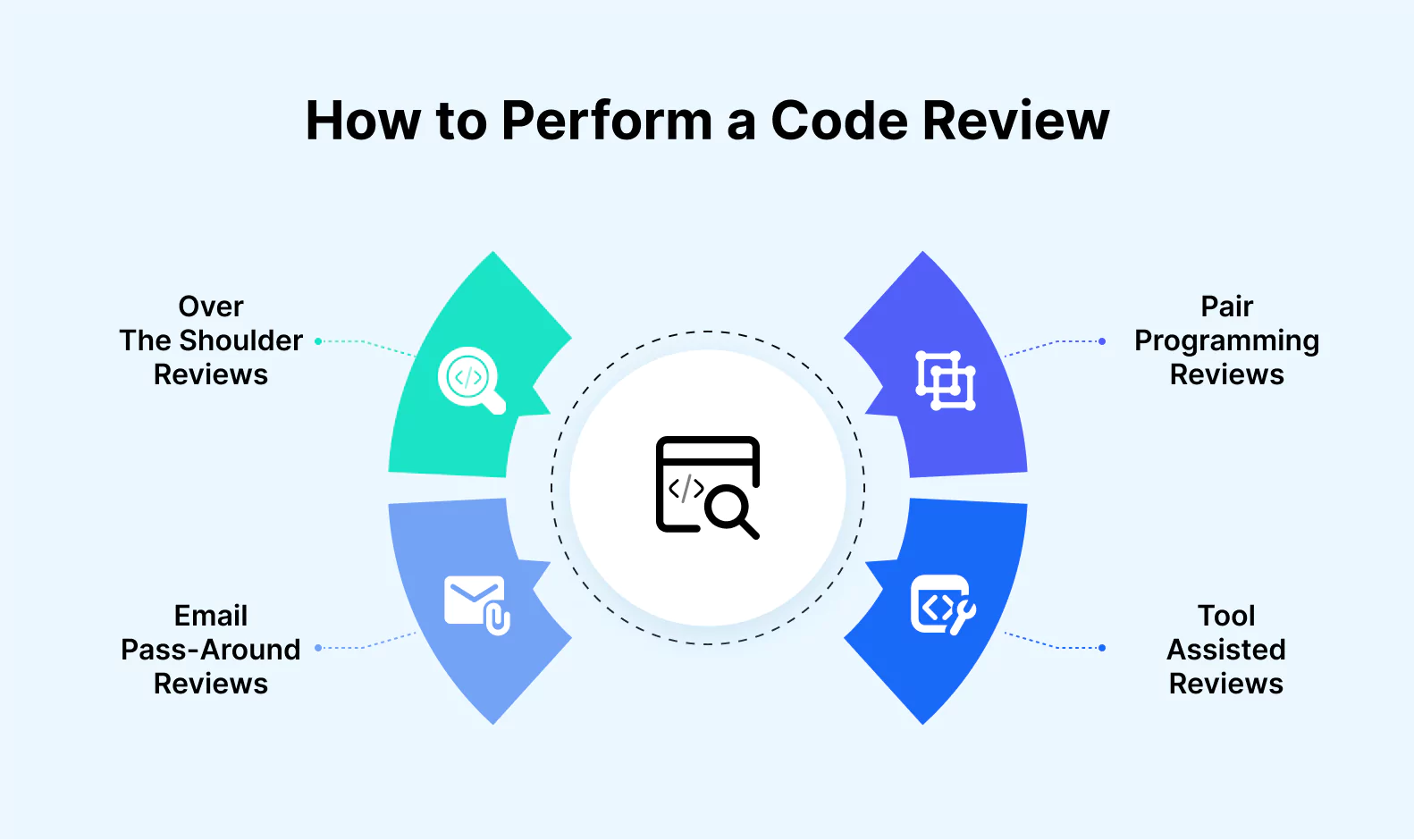
1. Email Pass-Around Reviews
Under this approach, when the code is ripe for review, it gets dispatched to colleagues soliciting their feedback. This method provides flexibility but can swiftly turn complex, leaving the original coder to sift through a multitude of suggestions and viewpoints.
2. Paired Programming Reviews
Here, developers jointly navigate the same code, offering instantaneous feedback and mutually scrutinizing each other's work. This method encourages mentorship and cooperation, yet it might compromise on impartiality and may demand more time and resources.
3. Over-the-Shoulder Reviews
This approach involves a colleague joining you for a session where they review your code as you articulate your thought process. While it's an informal and straightforward method, it could be enhanced by incorporating tracking and documentation measures.
4. Tool-Assisted Reviews
Code review tools that are software-based bring simplicity and efficiency to the table. They integrate with web development frameworks, monitor comments and resolutions, permit asynchronous and remote reviews, and generate usage statistics for process enhancement and compliance reporting.
The Procedure for Code Review Process
Before you dive headfirst into load testing, it's crucial to set up a solid foundation. Rather than being an impulsive activity, load testing is a methodical process that demands careful planning and groundwork. To guarantee a successful load test that delivers precise and actionable results, there are several vital steps to complete. Let's take a look at them:
1. Code Creation
This initial stage involves the developer creating the code, often in a separate branch or dedicated environment. It's critical for the developer to conduct a self-review of their own work before calling for a review from peers.
This self-review serves as the first checkpoint to catch and fix obvious errors, enforce coding norms, and ensure alignment with the project's guidelines. This proactive step not only saves reviewers' time by filtering out elementary mistakes but also affords the developer a valuable learning opportunity by allowing them to reflect on and improve their code.
2. Review Submission
After the developer has thoroughly checked their own code, they put it forward for peer review. In many contemporary development workflows, this step is executed via a pull request or merge request.
This request, made to the main codebase, signals to the team that a new piece of code is ready for evaluation. The developer typically leaves notes highlighting the purpose of the changes, any areas of concern, and specific points they want feedback on.
3. Inspection
In this critical stage, one or more team members examine the submitted code. This inspection is not just a hunt for bugs or errors but also an assessment of code structure, design, performance, and adherence to best practices. Reviewers leave comments, pose questions for clarity, and suggest potential modifications. The primary purpose here is to ensure that the code is robust, maintainable, and in sync with the overall project architecture.
4. Modification
Following the feedback from the inspection stage, the original developer addresses the suggestions and concerns raised. They revisit their code to make the necessary alterations, fix highlighted issues, and possibly refactor their code for better performance or readability. This iterative process continues until all the review comments are addressed satisfactorily.
5. Endorsement
After the developer has made the required revisions and the reviewers have rechecked the changes, the reviewers provide their approval. This endorsement signifies that the reviewers are satisfied with the quality, functionality, and integration capability of the code.
6. Integration
The final step in the review process involves integrating the revised and approved code into the main codebase. This integration, often carried out through a 'merge' operation, signifies the completion of the code review process. It ensures that the newly added code is now a part of the overall software project, ready for further stages like testing or deployment.
Major Advantages of Code Reviews
By embracing code reviews as a regular practice, developers can harness these benefits and elevate the overall quality and efficiency of their software development process.
- Share Knowledge: Code reviews equip developers with an avenue for mutual learning, allowing for an exchange of strategies and solutions. Junior members of the team can glean invaluable insights from their more seasoned peers, thus catalyzing skill enhancement and forestalling the emergence of knowledge chasms within the group.
- Maintenance of Compliance: Code reviews ensure compliance with coding norms and foster uniformity within the team. For open-source projects with numerous contributors, reviews conducted by maintainers aid in preserving a unified coding style and preclude departures from pre-established guidelines.
- Bug Identification: By spotting bugs during code reviews, developers can rectify them before they are exposed to customers. Implementing reviews early in the software development lifecycle, in conjunction with unit testing, facilitates swift identification and rectification of issues, eliminating the need for eleventh-hour fixes.
- Boosted Security: Code reviews are instrumental in detecting security vulnerabilities. Incorporating security experts into targeted reviews adds an extra tier of protection, supplementing automated scans and tests. Early detection and resolution of security issues contribute to the creation of sturdy and secure software.
- Elevation of Code Quality: Code reviews aid in delivering high-quality code and software. Human reviewers can pinpoint code quality issues that might evade automated tests, aiding in reducing technical debt and ensuring the release of reliable and maintainable software.
- Fostering Collaboration: Collaborative code reviews nurture a sense of responsibility and camaraderie among team members. By collectively striving to find the best solutions, developers enhance their collaborative skills and stave off informational silos, resulting in a smooth workflow.
Disadvantages of Code Reviews
- Time-Consuming: Code reviews can be time-consuming, especially when dealing with large codebases or complex changes. Reviewers need to invest time and effort in thoroughly examining the code, which can impact overall development speed and project timelines.
- Resource-Intensive: Code reviews require the participation of multiple team members, including both the author and reviewers. This can place a burden on team resources, especially in larger teams or organizations with limited personnel availability.
- Reviewer Bias: Reviewers may have personal biases or preferences that can influence their feedback. This bias can lead to inconsistencies in the review process and may impact the objectivity of the feedback provided.
Best Practices for Conducting Code Reviews
Let's delve further into the best practices for code reviews, ensuring that your code is of the highest quality. By implementing these techniques, you can foster a positive and collaborative environment within your team. Here are some additional tips:

Create a Code Review Checklist
The code review checklist serves as a structured method for ensuring code excellence. It covers various aspects such as functionality, readability, security, architecture, reusability, tests, and comments. By following this checklist, you can ensure that all important areas are thoroughly reviewed, leading to better code quality.
Introduce Code Review Metrics
Metrics play a crucial role in assessing code quality and process improvements. Consider measuring the inspection rate, defect rate, and defect density.
The inspection rate helps identify potential readability issues, while the defect rate and defect density metrics provide insights into the effectiveness of your testing procedures. By monitoring these metrics, you can make data-driven decisions to enhance your code reviews.
Keep Code Reviews Under 60 Minutes
It's advisable to keep code evaluation sessions shorter than 60 minutes. Extended sessions may lead to decreased efficiency and attention to detail.
Conducting compact, focused code evaluations allows for periodic pauses, giving reviewers time to refresh and return to the code with a renewed perspective. Regular code evaluations foster ongoing enhancement and uphold a high-quality code repository.
Limit Checks to 400 Lines Per Day
Reviewing a large volume of code at once can make it challenging to identify defects. To ensure thorough reviews, it is advisable to limit each review session to approximately 400 lines of code or less. Setting a lines-of-code limit encourages reviewers to concentrate on smaller portions of code, improving their ability to identify and address potential issues.
Offer Valuable Feedback
When delivering feedback during code evaluations, aim to be supportive rather than critical. Rather than making assertions, pose questions to spark thoughtful conversations and solutions. It's also vital to provide both constructive criticism for improvements and commendation for well-done code. If feasible, conduct evaluations face-to-face or via direct communication channels to ensure effective and lucid communication.
Keep in mind code evaluations are a chance for learning and progress. Approach the process with an optimistic attitude, centering on continual enhancement and fostering a team-based environment. By observing these beneficial practices, you can improve your code quality, enhance team collaboration, and eventually deliver superior software solutions.
Code Review Tools
A code review tool simplifies the process of reviewing code by automating it. It seamlessly integrates with your development cycle, allowing for thorough code reviews before merging into the main codebase.
Code review tools offer a structured framework for conducting reviews, seamlessly integrating them into the larger development workflow. With the help of code review tools, the entire process of code review becomes more organized and streamlined.
Incorporation of code review tools into your development workflow ensures that your code is thoroughly examined, promoting the discovery of potential bugs or vulnerabilities. One significant advantage of code review tools is the improved communication they enable between the parties involved. By providing a centralized platform, these tools allow developers to communicate and exchange feedback efficiently. This not only enhances collaboration but also creates a record of the review process.
It's important to select a tool that is compatible with your specific technology stack so that it can easily integrate into your existing workflow. Let's explore some of the most popular code review tools that can greatly assist you in enhancing your code quality and collaboration within your development team.
These tools offer various features and integrations that can fit your specific needs and technology stack, enabling you to achieve optimal results in your code review process.
GitHub

GitHub provides code review tools integrated into pull requests. You can request reviews, propose changes, keep track of versions, and protect branches. GitHub offers both free plans and paid plans, which start from $4 per user per month.
GitLab
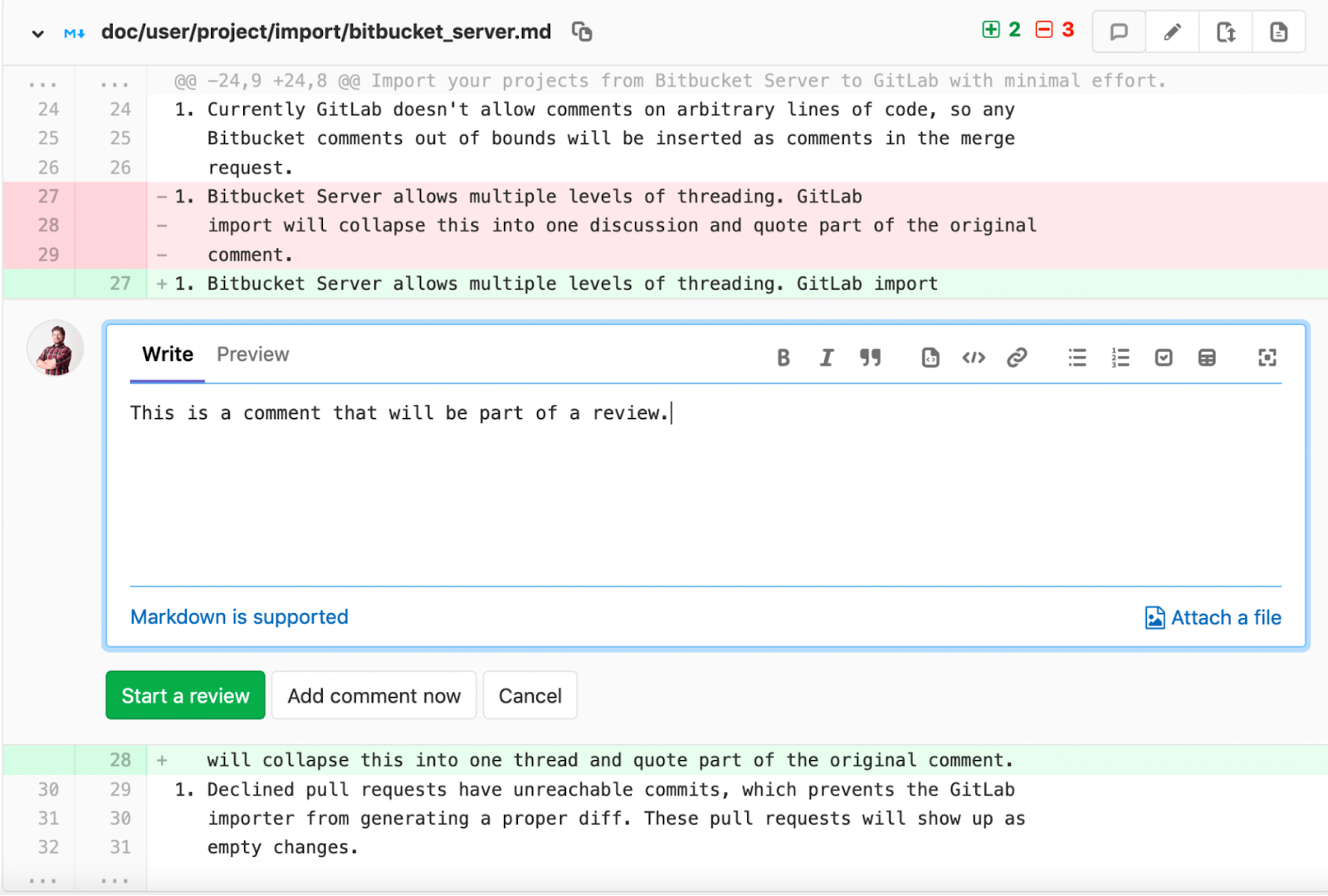
GitLab allows distributed teams to review code, discuss changes, share knowledge, and identify defects through asynchronous review and commenting. It offers automation, tracking, and reporting of code reviews. GitLab has a free plan and paid plans start from $19 per user per month.
Bitbucket
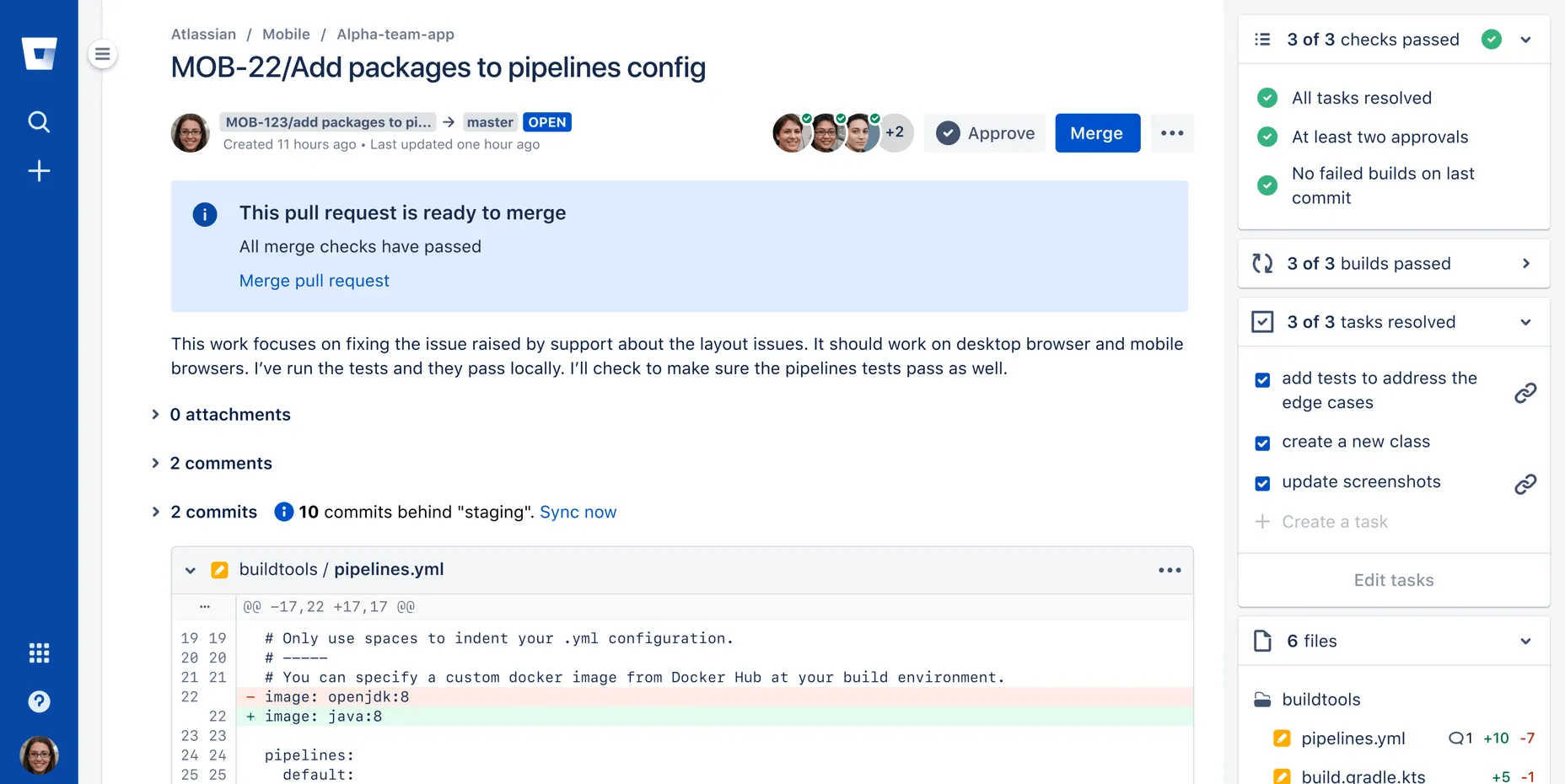
Bitbucket Code Review by Atlassian offers a code-first interface for reviewing large diffs, finding bugs, collaborating, and merging pull requests. It has a free plan, and paid plans start from $3 per user per month.
Azure DevOps
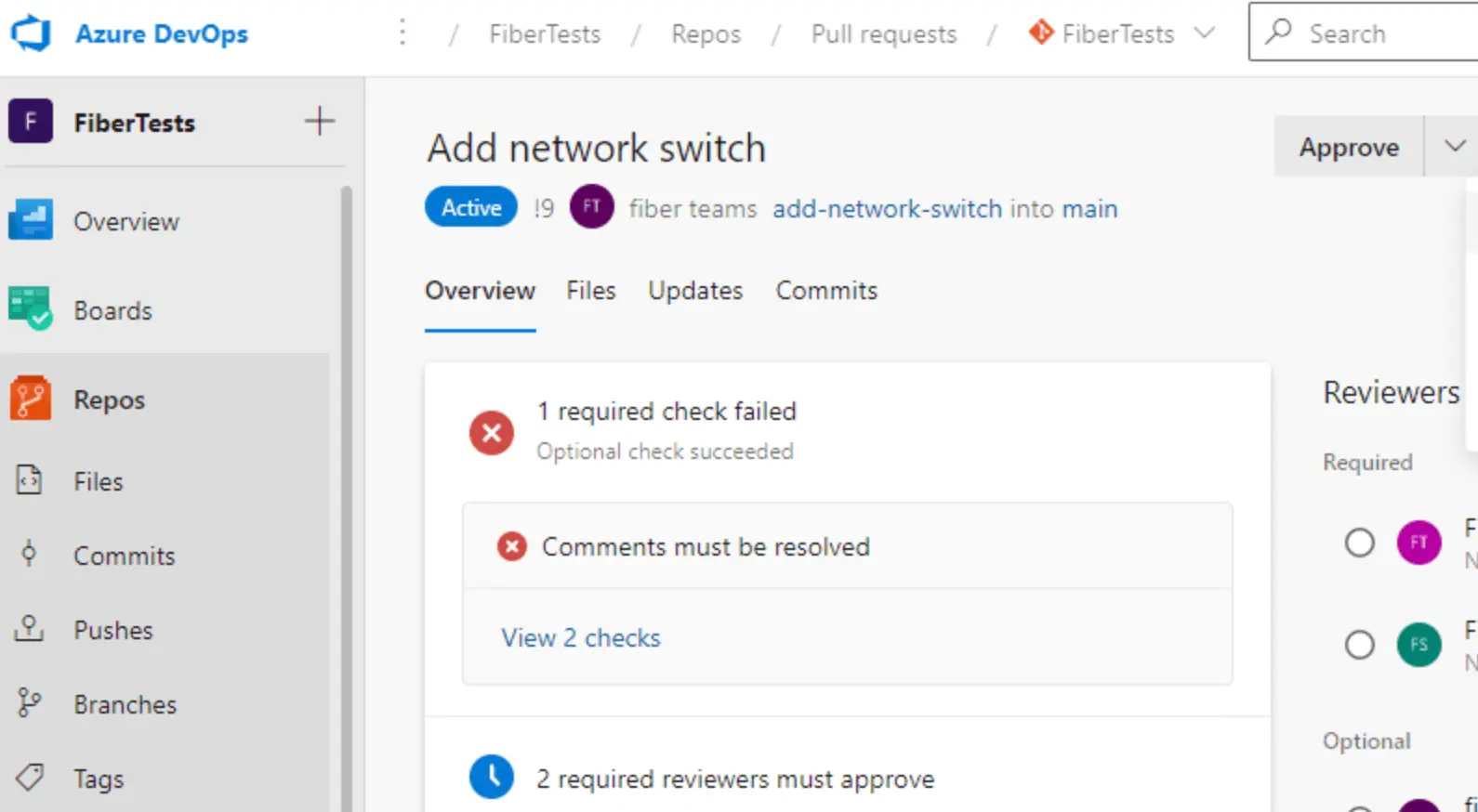
Azure DevOps, developed by Microsoft, integrates code reviews into Azure Repos and supports a pull request review workflow. It provides threaded discussions and continuous integration. The basic plan is free for teams of five, and then it costs $6 per month for each additional user.
Crucible

Crucible, from Atlassian, is a lightweight code review software with threaded discussions and integrations with Jira Software and Bitbucket. It requires a one-time payment of $10 for up to five users or $1,100 for larger teams.
CodeScene

CodeScene goes beyond traditional static code analysis by incorporating behavioral code analysis. It analyzes the evolution of your codebase over time and identifies social patterns and hidden risks. CodeScene offers cloud-based plans, including a free option for public repositories on GitHub and on-premise solutions.
It visualizes your code, profiles team members' knowledge bases, identifies hotspots, and more. You can explore CodeScene through a free trial or learn more about it in their white paper.
Gerrit

Gerrit is an open-source tool for web-based code reviews. It supports Git-enabled SSH and HTTP servers and follows a patch-oriented review process commonly used in open-source projects. Gerrit is free to use.
Upsource
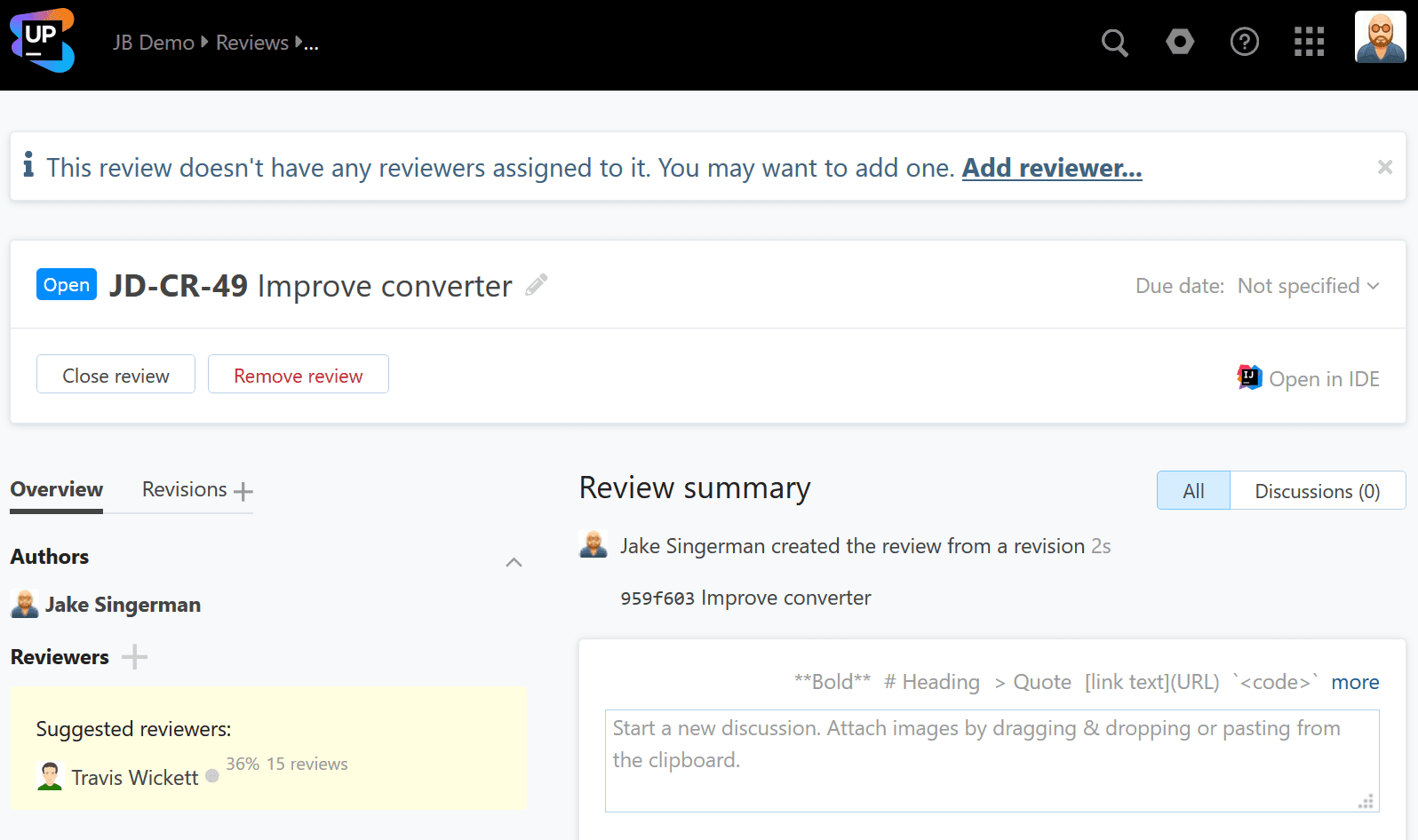
JetBrains Upsource offered post-commit code reviews, pull requests, branch reviews, and project analytics. However, it is no longer available as an independent tool. Instead, JetBrains has incorporated code review functionality into their larger software platform called JetBrains Space.
Reviewable

Reviewable is a code review tool specifically designed for GitHub pull requests. It offers a free option for open-source repositories, and plans for private repositories start at $39 per month for ten users. Reviewable overcomes certain limitations of GitHub's built-in pull request feature and provides a more comprehensive code review experience.
JetBrains Space
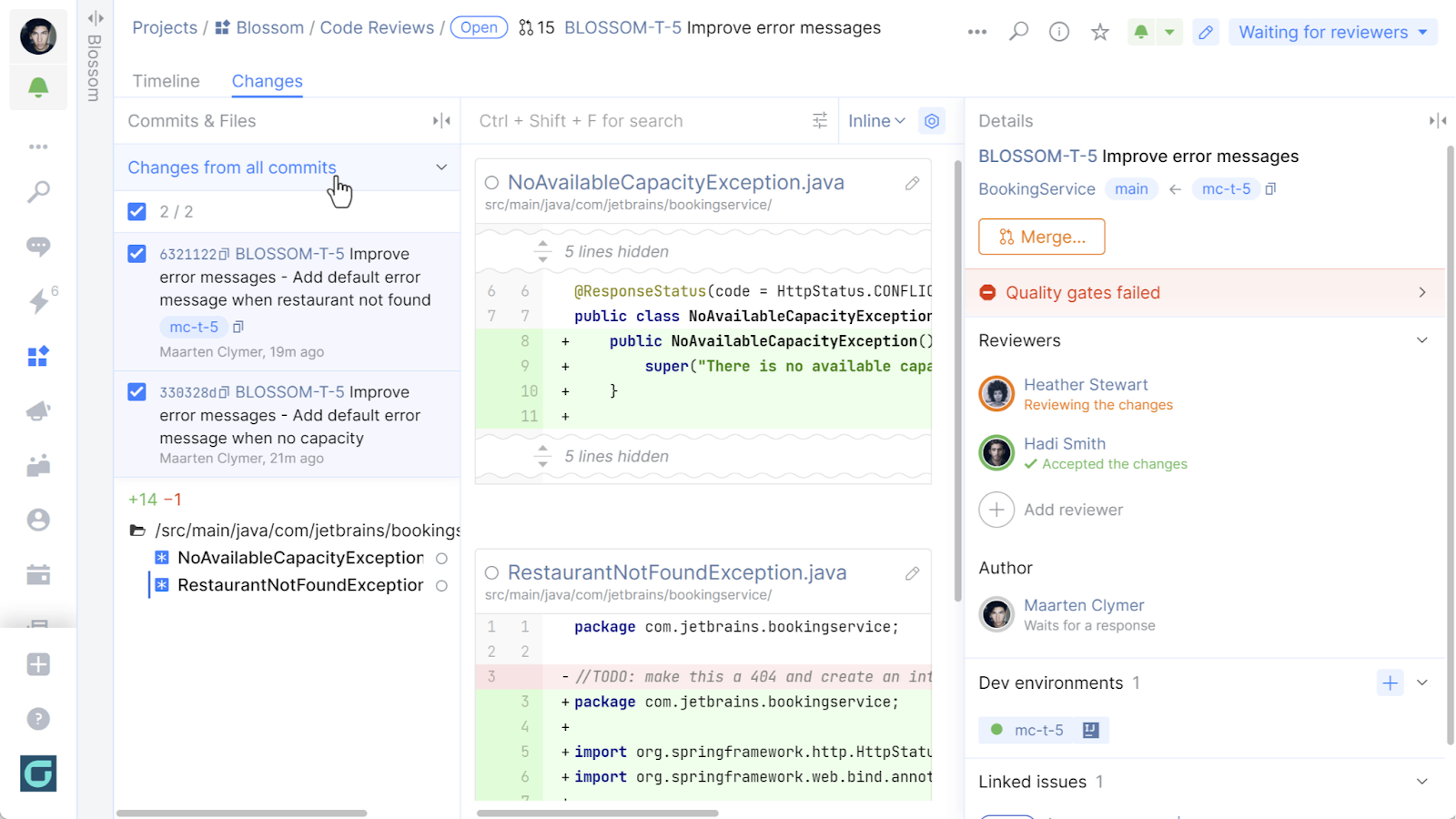
JetBrains Space is a modern and comprehensive platform for software teams that covers code reviews and the entire software development pipeline. It allows you to establish a customizable and integrated code review process.
Space offers turn-based code reviews, integration with JetBrains IDEs, and a unified platform for hosting repositories, CI/CD automation, issue management, and more. The minimum Price starts at $8 per user per month, and a free plan is also available.
Review Board
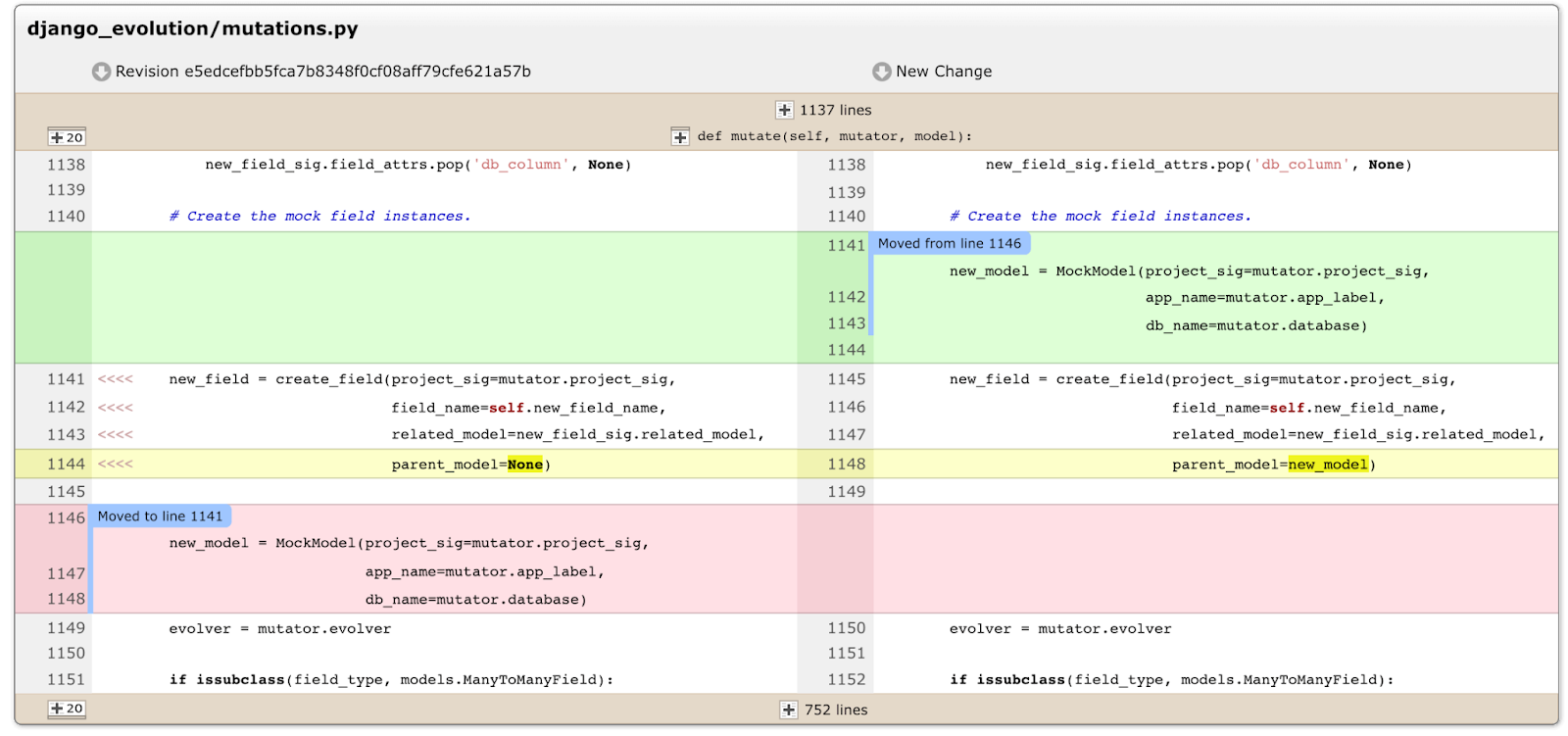
Review Board is an extensible tool that supports reviews on various file types, including presentations, PDFs, and images, in addition to code. It offers paid plans starting from $29 per 10 users per month.
Axolo

Axolo takes a unique approach to code review by focusing on communication. It brings code review discussions into Slack by creating dedicated Slack channels for each code review. Only the necessary participants, including the code author, assignees, and reviewers, are invited to the channel. Axolo minimizes notifications and archives the channel once the branch is merged. This approach streamlines code review and eliminates stale pull requests.
AWS CodeCommit
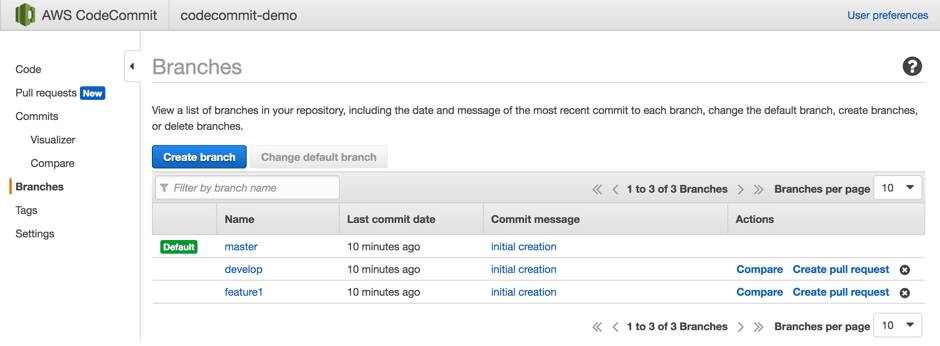
AWS CodeCommit is a source control service that hosts private Git repositories and has built-in support for pull requests. It is compatible with Git-based tools and offers a free plan for up to five users. Paid plans start from $1 per additional user per month.
Gitea

Gitea is an open-source project that provides lightweight and self-hosted Git services. They support a standard pull request workflow for code reviews and are free to use.
Collaborator
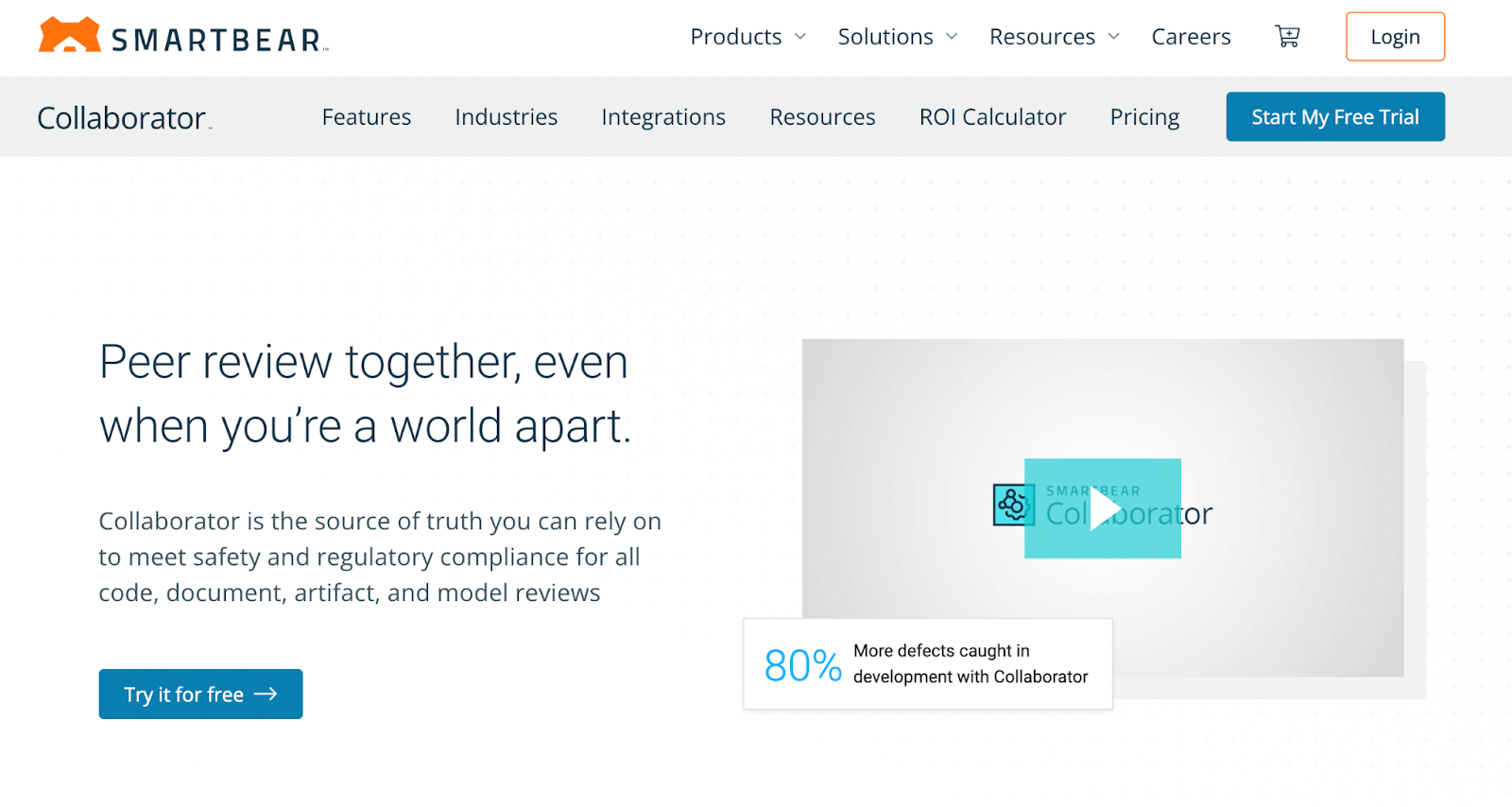
Collaborator by SmartBear is a peer code and document review tool that integrates with various IDEs and hosting services. It offers a customizable workflow and paid plans starting from $529 per year for up to 25 users.
Helix Swarm

Helix Swarm is a web-based code review tool designed specifically for the Helix Core VCS. It seamlessly integrates with the complete suite of Perforce tools, providing teams that use Helix Core with a range of resources for collaborative work. Helix Swarm is free to use, making it an accessible choice for teams looking for an effective code review solution.
Peer Review for Trac

The Peer Review Plugin for Trac is a free and open-source code review option designed for Subversion users. It integrates seamlessly into Trac, an open-source project management platform that combines a wiki and issue-tracking system. With Peer Review Plugin, you can compare changes, have conversations, and customize workflows based on your project's requirements.
Veracode
Veracode offers a suite of code review tools that not only enable you to improve code quality but also focus on security. Their tools automate testing, accelerate development, and facilitate remediation processes. Veracode's suite includes Static Analysis, which helps identify and fix security flaws, and Software Composition Analysis, which manages the remediation of code flaws. You can also request a demo or else quote to explore Veracode further.
Rhodecode

Rhodecode is a web-based code review tool that supports Mercurial, Git, and Subversion version control systems. It offers both cloud-based and on-premise solutions. The cloud-based version starts at $8 per user per month, while the on-premise solution costs $75 per user per year. Rhodecode facilitates collaborative code reviews and provides permission management, a visual changelog, and an online code editor for making small changes.
Choose the one that best satisfies the requirements and financial constraints of your team from among these code review tools, as each one has distinctive features and pricing options. Code reviews can enhance the quality of your development process, help you find errors faster, and promote teamwork among members.
Benefits of Automated Code Reviews
Uniformity
Consistency is one of the hallmarks of good coding. It improves readability and maintainability, reducing errors and increasing efficiency. Automated tools take consistency to a new level. They apply the same set of rules and checks throughout your codebase uniformly, eradicating any room for human bias or errors.
So, no matter where in your codebase you are, rest assured the standards and rules are uniformly upheld.
Efficiency Personified
If there's one thing automated reviews are known for, it's their efficiency. They can scan through extensive codebases far more rapidly than a human reviewer ever could, pinpointing potential issues in a flash. You can't beat the clock when it comes to detecting and addressing issues swiftly, and automation is your ally in this race.
Spot It Early, Fix It Early
Automation and your CI/CD pipeline make a dynamic duo, working together to catch and report issues as soon as you commit your code. It's like having a vigilant guard at the gates of your codebase, spotting bugs and vulnerabilities before they can infiltrate further. Early detection is vital in reducing the long-term impact of bugs and makes fixing them a far more manageable task.
Real-Time Learning for Developers
Mistakes are excellent teachers. However, the lessons are far more effective when delivered immediately. Automated tools serve as your personal code tutor, providing instant feedback on your coding practices. They highlight errors and recommend fixes right away, turning each mistake into a learning opportunity.
This immediate feedback mechanism helps you avoid repeating the same mistakes, thus contributing to your growth as a developer.
Freeing Up Human Time
Automating routine checks allows you, as a developer, to channel your time and energy toward the more critical aspects of coding. Complex problems, intricate designs, and architectural decisions - these are areas where your skills truly shine. When automated tools handle the basic checks, you can concentrate on these high-level tasks, boosting your productivity and creativity.
Automation in code review is not about replacing humans. Instead, it's about optimizing the process, ensuring speed, efficiency, and accuracy. It's about letting machines do what they do best so that we, humans, can do what we do best. So, embrace automated code reviews, not as a replacement for manual reviews but as a complement, enhancing the effectiveness and reach of your code review process.
Code Review Checklist
A code review checklist can act as a handy guide to ensure a thorough and effective review process. Here are some essential points to consider:
Functionality
- Does the code accomplish the intended purpose?
- Have edge cases been considered and handled appropriately?
- Are there any logical errors or potential bugs?
Readability and Coding Standards
- Is the code clear, concise, and easy to understand?
- Does the code follow the project's coding standards and style guidelines?
- Are variables, methods, and classes named descriptively and consistently?
- Are comments used effectively to explain complex logic or decisions?
Error Handling
- Are potential exceptions or errors being appropriately caught and handled?
- Is the user provided with clear error messages?
- Does the code fail gracefully?
Performance
- Are there any parts of the code that could potentially cause performance issues?
- Could any parts of the code be optimized for better performance?
- Are unnecessary computations or database queries being avoided?
Test Coverage
- Are appropriate unit tests written for the functionality?
- Do the tests cover edge cases?
- Are the tests passing successfully?
Security
- Does the code handle data securely and protect against potential threats like SQL injection, cross-site scripting (XSS), etc.?
- Is user input being validated properly?
- Are appropriate measures being taken to ensure data privacy?
Modularity and Design
- Is the code well-structured and organized into functions or classes?
- Does the code follow good design principles like DRY (Don't Repeat Yourself) and SOLID (Single Responsibility, Open-Closed, Liskov Substitution, Interface Segregation, and Dependency Inversion)?
- Does the code maintain loose coupling and high cohesion?
Integration
- Does the code integrate correctly with the existing codebase?
- Are APIs or data formats being used consistently?
Documentation
- Is the code or its complex parts documented well for future reference?
- Is the documentation up-to-date with the latest code changes?
Remember, a good code review isn't just about finding what's wrong. It's also about appreciating what's right and maintaining a positive and constructive tone throughout the process.
Conclusion
Code review, despite being just one part of a comprehensive Quality Assurance strategy for software production teams, leaves a remarkable mark on the process. Its role in early-stage bug detection prevents minor glitches from snowballing into intricate problems and helps identify hidden bugs that could impede future developments.
In the current high-speed climate of software development, where continuous deployment and client feedback are crucial, it's rational to rely on proficient digital tools. The surge in code reviews conducted by development teams is largely attributed to what's known as the "Github effect."
By endorsing code reviews and cultivating a cooperative environment, we tap into the collective wisdom and diligence of developers, which leads to better code quality and diminishes issues arising from human errors.

